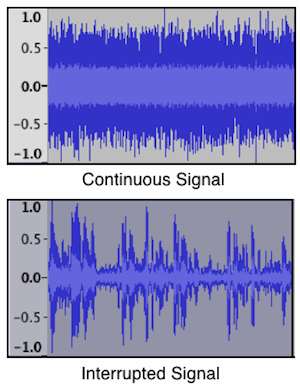Does Using Hearing Aids Lead to Further Hearing Loss? – Part I
I was asked recently by friend and colleague, Dr. David Preves, if I had any information about whether hearing aids caused further hearing loss. I recall this was a topic in 1974-75 during comments by HAIC (Hearing Aid Industry Conference – now Hearing Industries Association) to an Advisory ENT Panel of the FDA (Food and Drug Administration) regarding the classification of hearing aids under pending medical device legislation. The FDA was advocating for hearing aids to be classified as Category I (Premarket Scientific Review), whereas the Industry was pushing for Category III (General Controls).
The Industry was asked to comment on issues regarding the welfare, safety, and effective rehabilitation for the hearing-impaired public. We were responding to specific questions from the Advisory Panel related to: General Characteristics, Performance Standards, Power Source, Product Liability, Threshold Shifts, and Allergenic Reaction. Dr. John Sinclaire, Engineering Director of Zenith Hearing Instrument Corporation, and Chairman of the HAIC Standards and Technical Committee presented information relative to the Performance Characteristics of hearing aids, and I (Director of Education for Telex Communications, Inc.) was given the task of reporting on further danger to the ear as a result of hearing aid use – Threshold Shift. A short review of the role of threshold shift to this discussion is important, and follows.
Threshold Shift
This, and subsequent posts, will be confined to threshold shift, based on historical reporting. The direction taken is to look at threshold shift in view of the following:
- Temporary threshold shift (TTS)
- The relationship between TTS and PTS (permanent threshold shift)
- Differences between interrupted and continuous noise exposure and their effects on hearing
- Studies specifically looking for further damage caused by hearing aid use
- Studies on threshold of discomfort (TD) and amplification
- Evidence of damage encountered over the years
Caveat: This series on hearing aids and further hearing loss does not attempt to cover all research that has been conducted on this issue, but provides an historic accounting related to this topic.
Definitions Helpful in Understanding the Issue
Temporary Threshold Shift (TTS) – The dimunition, following exposure to noise, of the ability to detect weak auditory signals, with this decrease in sensitivity eventually disappearing{{1}}[[1]] Ward, W.D, Effects of noise on hearing thresholds, ASHA Reports, No. 4, 1969, pp. 40-48[[1]].
Permanent Threshold Shift (PTS) – The permanent dimunition following exposure to noise, of the ability to detect weak auditory signals{{2}}[[2]] Ward, W.D, Effects of noise on hearing thresholds, ASHA Reports, No. 4, 1969, pp. 40-48[[2]].
Continuous noise exposure – If the variations in noise level involve maxima at intervals of 1 second or less, it is considered continuous. A motor constantly running at a relatively stable sound pressure would be such an example.
Interrupted noise exposure – When noise exposure is composed of two or more periods of different levels. This is what the vast majority of individuals are exposed to (i.e., speech, music, etc.).
 The significance of the above definitions come into play when identifying the acoustic signal obtained by the user of a hearing aid and its effect on residual hearing. For example, amplification through a hearing aid is primarily interrupted noise exposure (sudden loud noise as an exception), and threshold shifts that might result from hearing aid use should be considered primarily as temporary threshold shifts. Ward {{3}}[[3]] Ward, W.D, Effects of noise on hearing thresholds, ASHA Reports, No. 4, 1969, pp. 41-42[[3]] summarized comments about the relationships of TTS and PTS as follows:
The significance of the above definitions come into play when identifying the acoustic signal obtained by the user of a hearing aid and its effect on residual hearing. For example, amplification through a hearing aid is primarily interrupted noise exposure (sudden loud noise as an exception), and threshold shifts that might result from hearing aid use should be considered primarily as temporary threshold shifts. Ward {{3}}[[3]] Ward, W.D, Effects of noise on hearing thresholds, ASHA Reports, No. 4, 1969, pp. 41-42[[3]] summarized comments about the relationships of TTS and PTS as follows:
- Apparently, the characteristics most important in determining whether or not an ear will get a relatively large amount of TTS are not also those that determine the degree of final loss from a particular exposure, even when the spectrum of the noise is constant.
- An intermittent noise is much less able to produce TTS than a steady one. In fact, the TTS is proportional to the fraction of the time that the noise is present. A noise that is on only half the time (in bursts of a few minutes or less) can be tolerated for much more than twice the number of working hours that could be spent in the noise when continuous, before the same TTS would be produced.
- When talking about the assumption of laws governing the growth and recovery of TTS to PTS, the burden of proof lies with those who say that TTS leads to PTS, since evidence to date does not support this conclusion.
Next Week: Part II. Studies Specifically Looking for Further Damage Caused by Hearing Aid Use – Single Case Observations.





